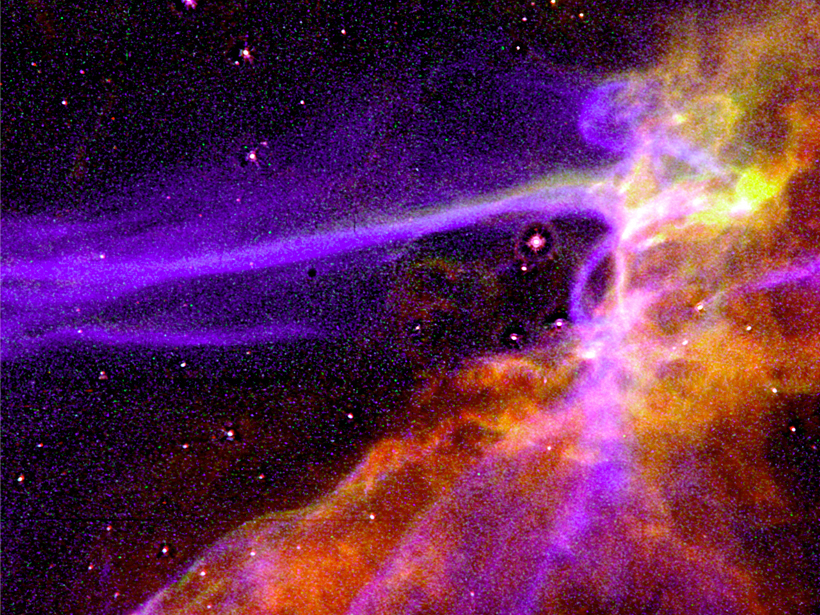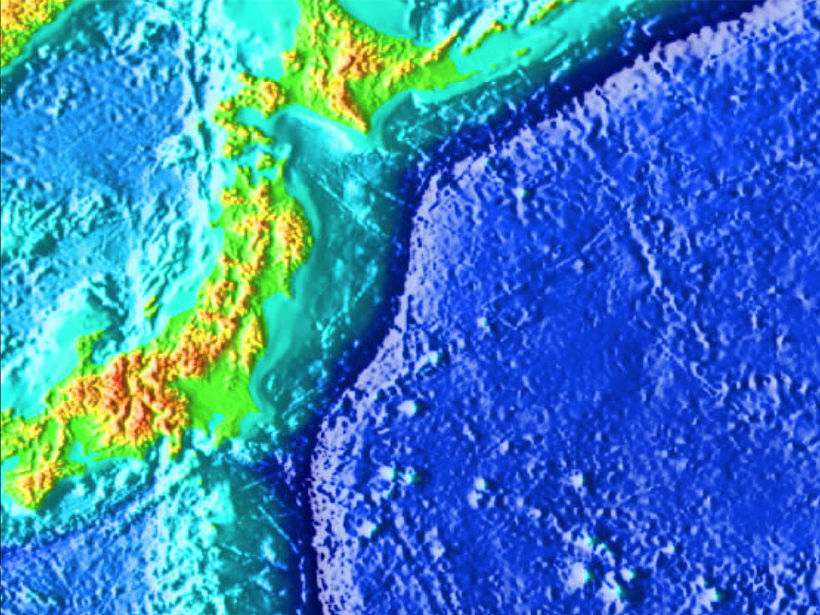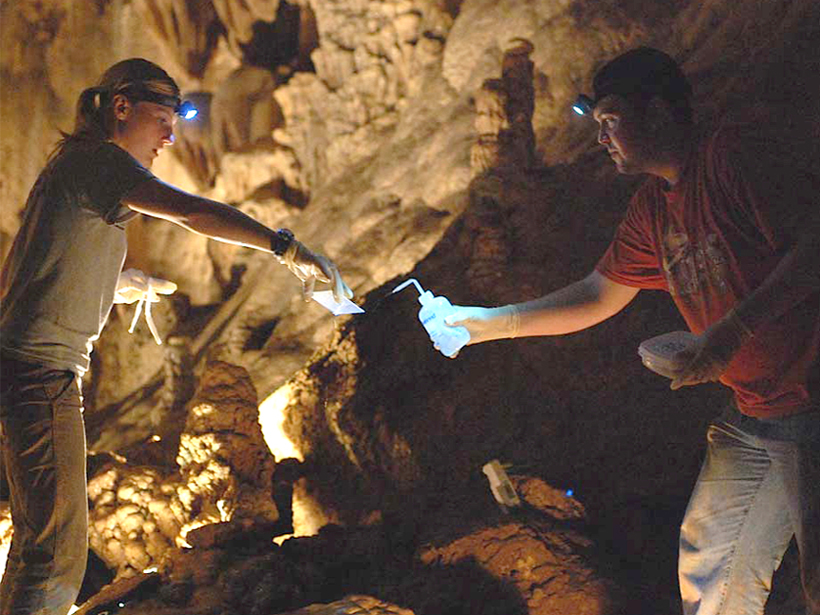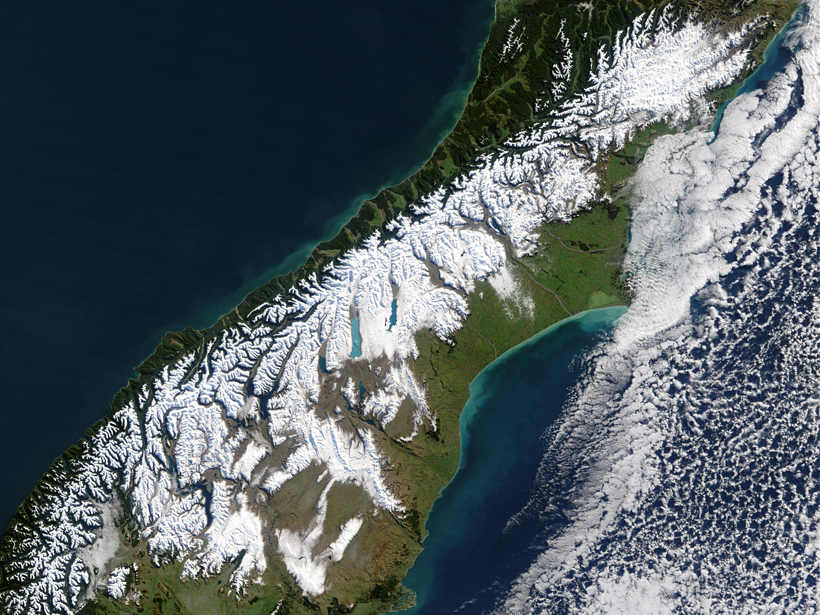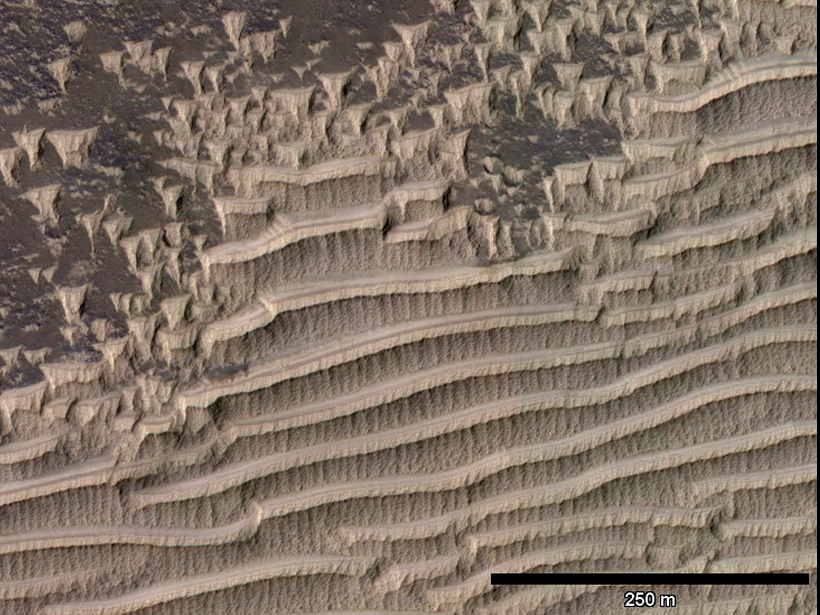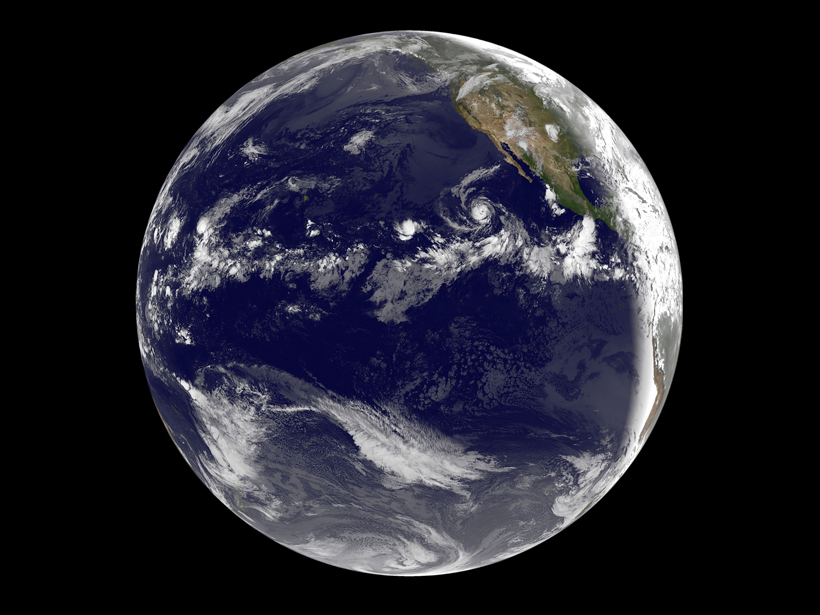Scientists create collisionless shock waves to better understand the phenomenon in nature.
Research Spotlights
Research spotlights are plain-language summaries of recent articles published in AGU’s suite of 24 journals.
New Insights into the Composition of Inner Earth
Isotopic signatures in volcanic basalts show that Earth's interior is even less uniform than scientists previously thought.
Bending Plate Provides Unexpected Heat Source
Scientists discover the causes for heat flow anomalies near the Japan Trench.
Cave "Breathing" Affects Mineral Growth and Climate Clues
A new global model suggests how and where air flow in caves affects the growth of cave mineral deposits that scientists use to reconstruct ancient climates.
A Magmatic Seafloor Source at an Ultraslow-Spreading Ridge
An ultraslow-spreading stretch of the Southwest Indian Ridge is thicker than expected: both tectonic and volcanic processes may be feeding the growing seafloor there.
Probing for Earthquakes' Origins
To better understand how earthquakes nucleate, scientists spy on the Alpine Fault in New Zealand.
Large Variability Measured in Kuroshio Current East of Taiwan
Ship surveys show that the "Gulf Stream" of the Pacific is not a stable boundary current.
What Formed These Curious Ripples on Mars?
Dunes, ridges, or something else? Scientists seek to understand the origins of transverse aeolian ridges.
Circulation Models Cannot Simulate Organized Tropical Convection
Challenges in predicting and simulating the Madden-Julian Oscillation indicate a lack of understanding of the atmospheric circulation pattern's fundamental physics.
Spacecraft Records Rising-Tone Magnetosonic Waves
A rising tone in wave frequencies suggests a complicated, nonlinear series of interactions between electromagnetic sound waves and protons near the magnetic equator.

